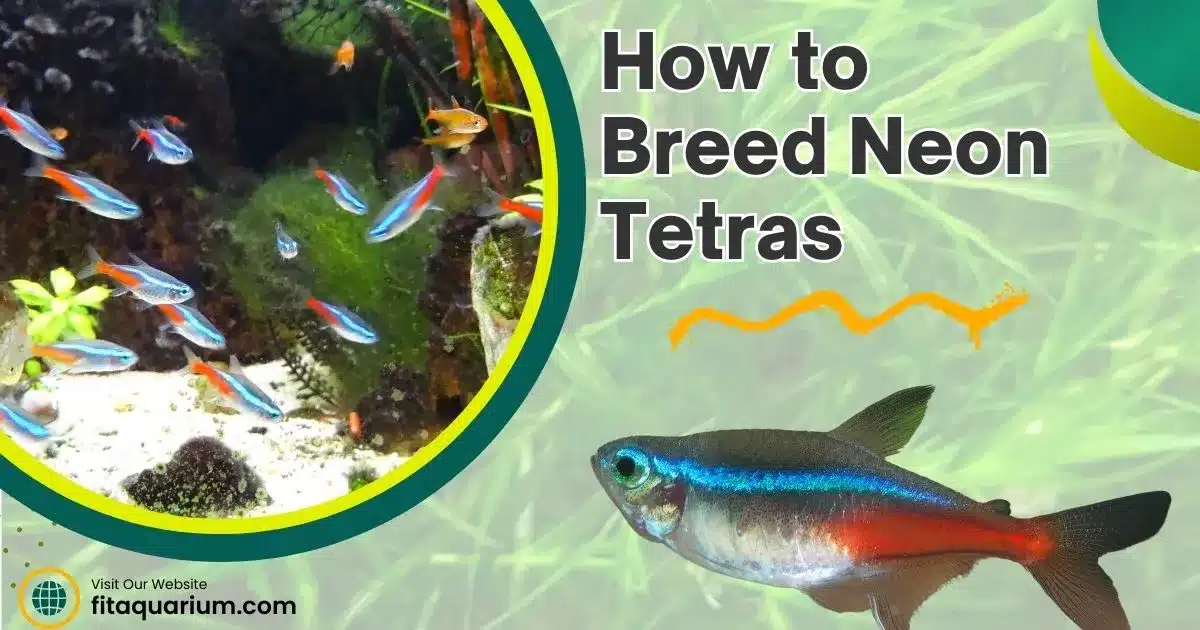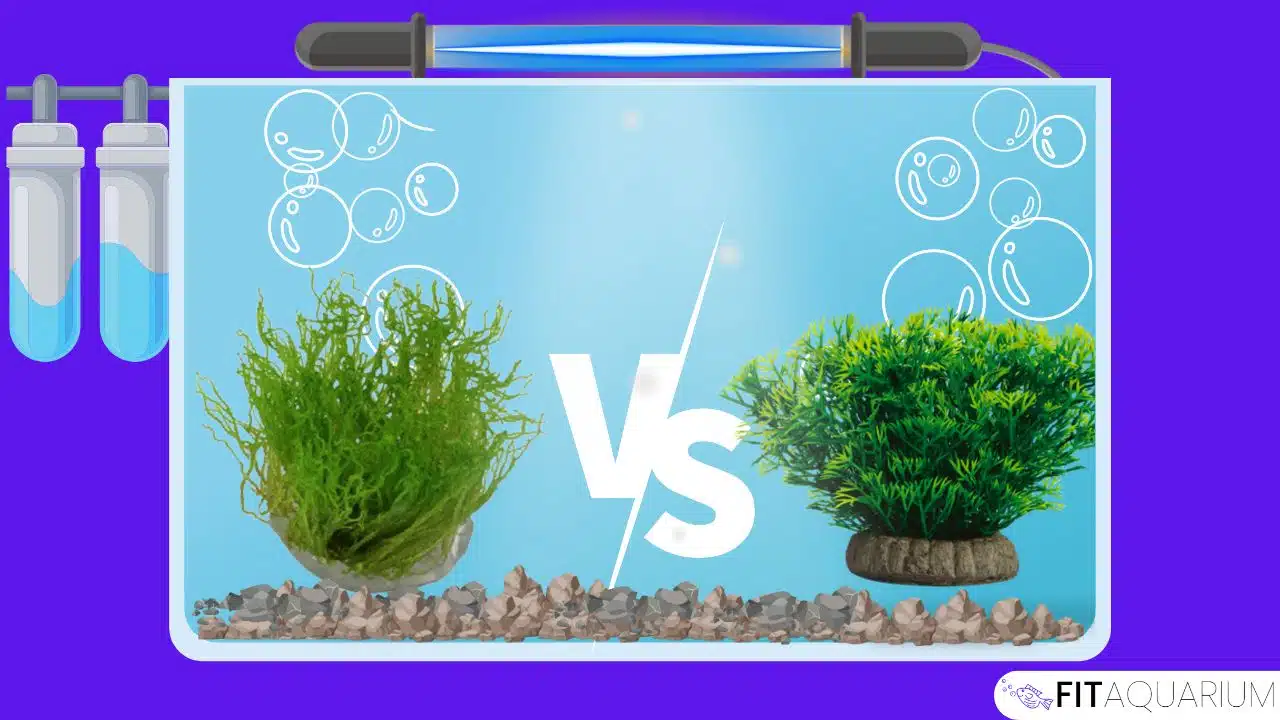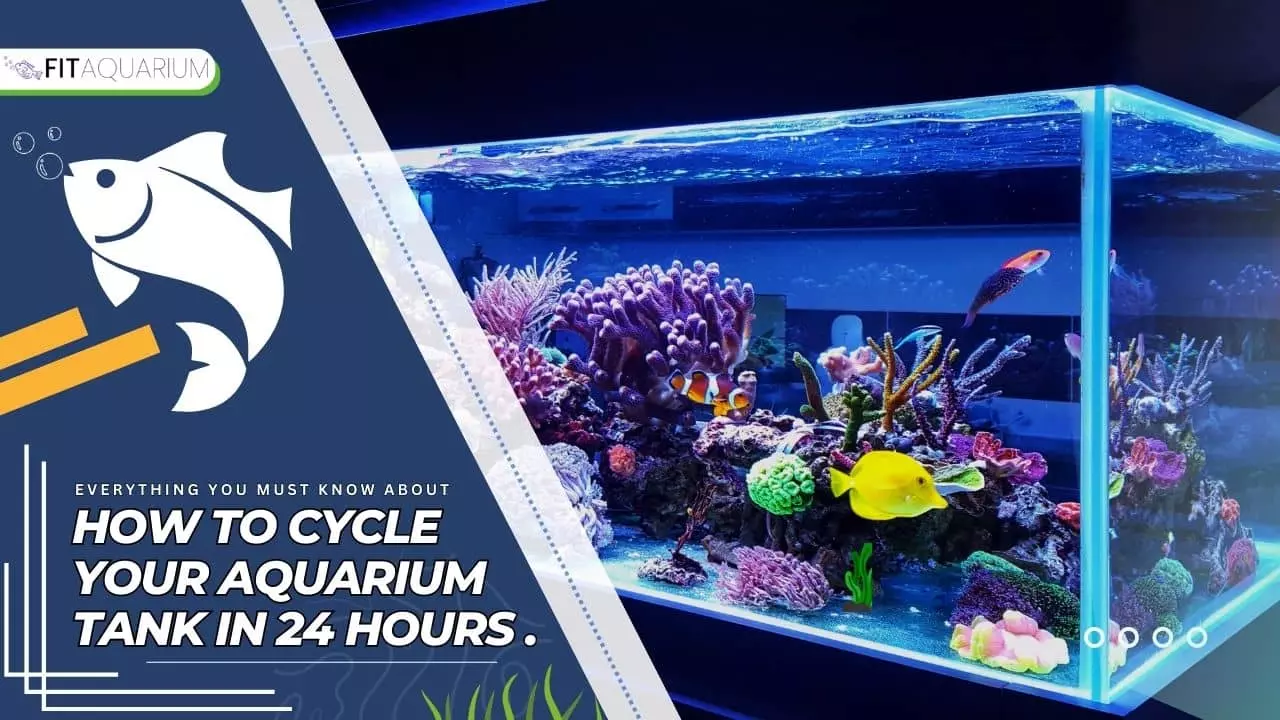Neon Tetra or Paracheirodon innesi, one of the most vibrant and lively fish, actively brightens up any aquarium. Breeding neon tetras can be a rewarding experience for aquarium enthusiasts, but it does come with its own set of challenges.
To successfully breed neon tetras, one must delve into the specifics of neon tetra breeding, ensuring all breeding requirements are properly met.

In this article, I will provide in-depth guidance on the intricate process of breeding neon tetras. So, let us explore the breeding process of this aquarium jewel!
Table of Contents
Selecting a Neon Tetra Pair
The journey to breed neon tetras begins with selecting a healthy pair or group of adult tetras that showcase the right signs of readiness for breeding. Observing their activity in the aquarium is one method for identifying feasible breeding partners.
Look for tetras with bright colors dynamic swimming patterns and a robust diet. Consider the physical characteristics of the fish, and choose individuals with comparable sizes to improve compatibility. While keeping these points in mind, you can choose a pair of these dazzling species that are ready to breed.
Caution: Stay away from choosing fish that show symptoms of sickness or injury, since they might harm the reproduction process.
Identifying Gender Differences in Neon Tetras for Successful Breeding
Recognizing the male from the female neon is pivotal for successful breeding, as it directly influences your breeding strategy.
In adult neon tetras, females typically exhibit a more rounded belly, which is especially noticeable when they’re ripe with eggs. Meanwhile, the male neon tetra boasts a slimmer profile, with a straighter blue line than his female counterparts. These gender differences are subtle but crucial; they’re the nuanced details experts emphasize for precision breeding neon tetras.
The Neon Tetra Habitat: Setting Up Your Breeding Tank
When aspiring to breed neon tetras, creating the perfect breeding aquarium environment becomes the cornerstone of success. Neon Tetra breeding is a meticulous process that demands an appropriately designed habitat within your tank, specifically geared towards encouraging the breeding cycle. To replicate the ideal breeding conditions, every factor from water parameters to the tank’s ecosystem must be controlled with precision.

Some aquarists advise to first quickly cycle your aquarium tank before adding a breeding pair of tetras to it. But if you don’t have that much time, you can simply skip this process. It will not harm. Let’s cover the crucial aspects of setting up your breeding tank:
- Choosing the Right Aquarium Size:
The first step in setting up your breeding tank is to choose an aquarium that is conducive to the process. Neon tetras thrive in a serene environment, so a standard 10-gallon tank can be an excellent starting point for breeding neon tetras.
It’s essential to consider the space requirements of neon tetras during the breeding phase, and while a larger tank can be beneficial, maintaining correct water parameters becomes more challenging as the tank size increases. Remember, the quality of the environment in the tank plays a crucial role in neon tetra breeding success.
- Optimising Water Parameters for Breeding Success:
Maintaining the right water parameters is the essence of a thriving habitat. Initially, it’s critical to adjust the water temperature between 72-76°F(about 22-24°C). Pay attention to the hardness of the water; neon tetras prefer soft water, with a recommended hardness of no more than 2 °dGH.
Moreover, the pH level should be slightly acidic, ranging from 6.0 to 7.0, to closely mirror their natural environment. These parameters must remain stable throughout the breeding process, and using reliable equipment for constant monitoring is advisable to prevent any undesirable fluctuations.
- Creating a Suitable Environment Within the Tank:
Once the tank itself is selected and the water conditions are optimized, the next focus is on developing a suitable environment within the habitat. This means providing an array of fine-leaved plants or spawning mops where the neon tetras can lay their eggs. You can also carpet Java Moss in your tank for this purpose. It’s also beneficial to use a substrate that mimics the natural riverbeds found in their native habitat.
Pro Tip: Dark substrates are particularly effective in creating an ideal breeding environment.
- Placement of Breeding Tank:
To avoid temperature and light variations that could disrupt the breeding process, keep the breeding tank away from windows and direct sunlight. Instead, place the tank in low lighting or a dark area.
Moreover, the tank should be placed in a peaceful area away from heavy traffic and noise. This reduces stress on the breeding individuals and creates an appropriate environment for successful breeding.
- Maintaining Water Quality and Preventing Disease:
The breeding environment should be kept clean, and measures must be taken to prevent disease during neon tetra breeding. To do this, it’s important to have a stable cycle of clean water through the use of a gentle filter while avoiding strong currents that could stress the fish or disturb the eggs.
Additionally, high-quality water conditioning and regular testing for ammonia, nitrates, and nitrites are imperative for maintaining a healthy breeding environment.
When you breed neon tetras, pay close attention to ensure that the fish are lively and exhibit their trademark brilliant colors. A common ailment that afflicts breeding neon tetras is Neon Tetra Disease (NTD), caused by a parasitic organism. Preventing this condition is far more effective than treating it, so a regular schedule that involves quarantine of new tetras and monitoring for unusual behavior signs of sickness is vital.
Pro Tip: Cover the tank to maintain stable temperature and humidity levels.
- Isolating the Breeding Pair from Other Tank Species:
When it comes to the selection of tank mates in the breeding aquarium, it’s generally recommended to remove other fish during the breeding period to ensure that the neon tetra eggs are not eaten and to provide a stress-free environment for the prospective parents.
Lone breeding pairs or small groups of neon tetras are the standard for breeding neon tetras to keep competition and aggression at bay.
Neon Tetra Diet and Feeding: Ensuring Health for Breeding
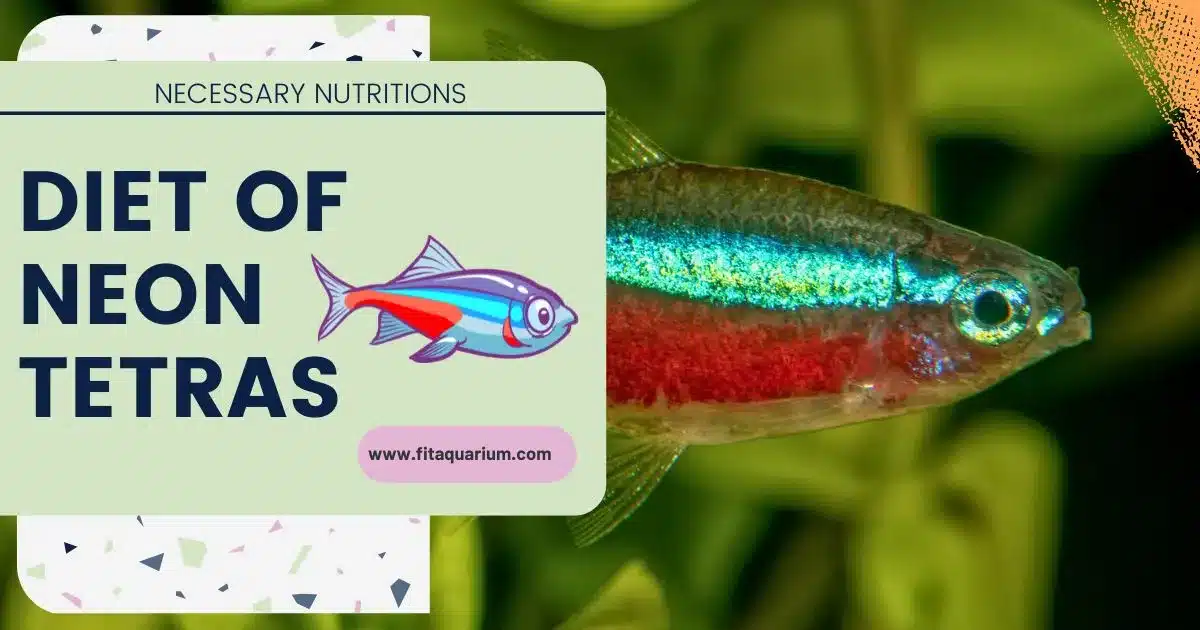
Initiating the process necessitates an understanding of the typical foods that constitute a nutritious neon tetra diet. High-quality food items are non-negotiable—these tetras thrive on a varied menu that includes brine shrimp, daphnia, and specially formulated flake food designed for maximum digestibility and nutrient absorption. It’s not just about the food, food, and more food; it’s about the right type and quality of food that covers all bases—proteins, fats, and vitamins.
Before breeding, conditioning the neon tetras with live or frozen food can lead to increased spawning success. Such a diet elevates the health of the fish, but it also serves as a catalyst for breeding behavior. Overfeeding can lead to water quality issues detrimental to both neon tetras and their tank mates. Conversely, underfeeding during the breeding period can result in diminished health and less viable fry.
The Reproduction of Neon Tetras: The mating process of breeding tetras
The process of reproduction starts from the courtship behavior of breeding tetras. Neon tetras’ courtship behavior is intriguing, with vivid colors, precise motions, and nuanced communication between possible mates.
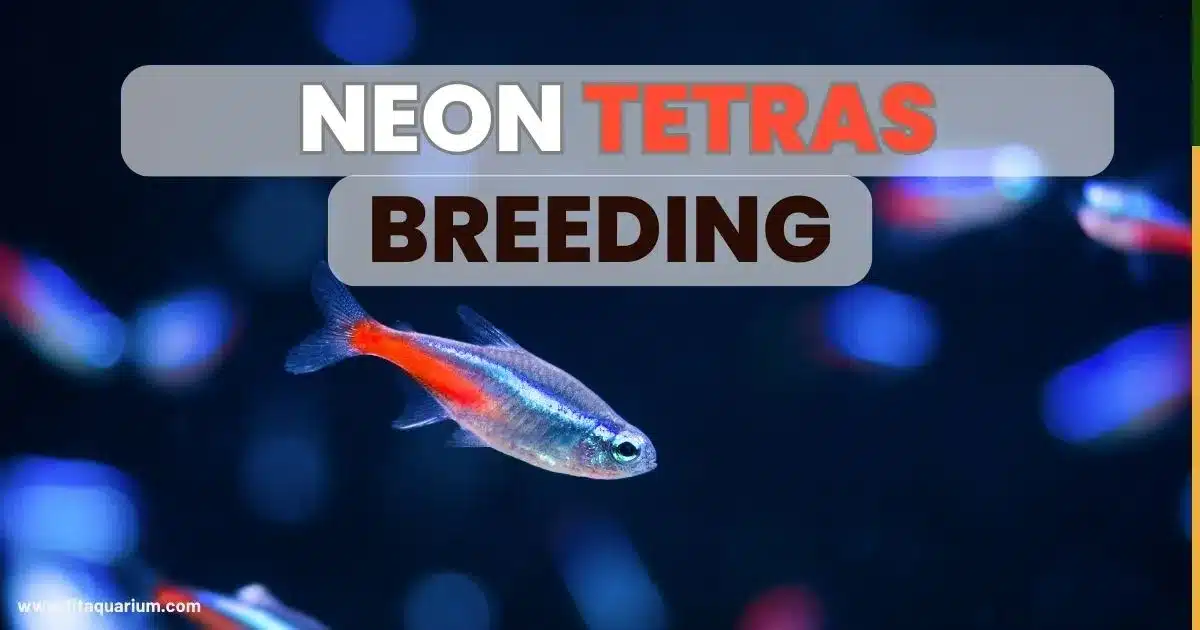
During courting, male neon tetras flaunt their bright blue and red stripes by fin-flaring, stretching their fins to reveal their full magnificence. The enticing visual not only emphasizes male’s health and vitality but also catches the interest of female tetras.
Females may also engage in response activities like swimming together with males, expressing their agility, and assessing the male’s eligibility as a mate. This synchronized swimming acts as a sort of interaction, allowing the pair to interact and assess each other’s fitness for reproduction. Together, these mating actions create a captivating ballet of color and movement, signaling neon tetras’ willingness to begin their reproductive cycle.
If you’re fascinated by unique courtship behaviors, explore this comprehensive guide on Scarlet Badis Breeding
Spawning and Fertilisation
After the breeding dance, which is quite a spectacle to behold, fertilization occurs and the female neon will scatter her eggs onto plants or a designed breeding medium. The number of eggs can be more than 100.
From this point onward, the fertilized tetra eggs demand careful attention. Adult tetras often have to be removed post-spawning to prevent them from preying on their eggs, a common occurrence in many breed-friendly tank environments.
Caring for Eggs and Fry

Caring for neon tetra eggs and baby tetras (fry) is crucial for effectively breeding these brilliant fish. After the eggs have been laid, some hobbyists separately incubate the eggs in another tank reserved for neon fry to ensure that none of the young fall prey to adult appetites. With diligent care, about one-third of the neon tetra eggs will ultimately hatch into fry, in about 24 hours, emphasizing the swift nature of neon tetra breeding.
When the eggs hatch into fry, caring for them demands even more attention and effort. Neon tetra fry are extremely sensitive in their early stages of development and require specific care and nourishment to survive. Providing them with appropriate food sources, especially small foods, such as infusoria, hard-boiled egg yolk, and newly hatched brine shrimp, is critical to their growth and development. It is also important to maintain a strict feeding schedule to avoid overfeeding, which can lead to water quality problems and kill the fry.
Interesting Fact: Newly hatched fry look like small splinters of glass in the tank, but after one month they show adult coloration.
Conclusion
In conclusion, breeding neon tetras takes careful consideration of detail and persistence. By selecting robust breeding partners, developing an appropriate breeding tank environment, and maintaining water quality, enthusiasts can improve their potential for successful reproduction. With proper care and patience, admiring neon tetra fry swim in the aquarium can be a truly satisfying adventure for any hobbyist.
About The Author
Hi, I’m R. Torres, the proud owner of connectfishfriends.com. With 8 years of fish-keeping passion, I created this platform to unite the community. By day, I’m a software engineer, and by heart, I’m an aquarium enthusiast fostering connections and affordable deals among fellow hobbyists.
Frequently Asked Questions
Here are some burning questions that can come across your mind during the breeding of Neon Tetras. But if you still have any confusion, ask it in the comments below and I’ll surely answer you.
-
Are neon tetras easy to breed?
Breeding neon tetras can be difficult due to the specific breeding requirements. While not impossible, it demands utmost care to specifics and devotion to maximize the chances of successful breeding.
-
How can you tell if a neon tetra is male or female?
Male and female neon tetras can be distinguished by their body shapes and colors. Females often have a wider belly, especially when full of eggs, whilst males are thinner and have a straight blue line along their bodies.
-
Will my neon tetras have babies?
Neon tetras can breed in home aquariums, but it is dependent on a variety of parameters such as water quality, tank arrangement, and appropriate breeding partners. With proper care and the ideal conditions, your neon tetras may breed and produce offspring. However, it is not guaranteed.

